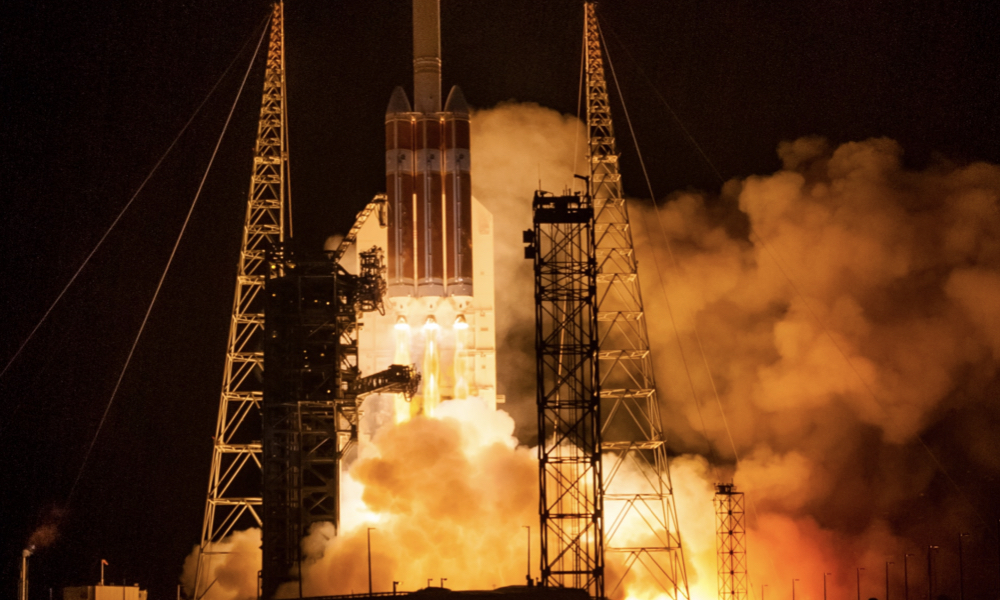
ESA Open Invitation to Tender AO9396
Open Date: 17/07/2018
Closing Date: 17/09/2018 13:00:00
Status: ISSUED
Reference Nr.: 18.1QC.04
Prog. Ref.: Technology Developme
Budget Ref.: E/0901-01 – Technology Developme
Special Prov.: BE+DK+FR+DE+IT+NL+ES+SE+CH+GB+IE+AT+NO+FI+PT+GR+LU+CZ+RO+PL+EE+HU
Tender Type: C
Price Range: 200-500 KEURO
Products: Launchers / Materials / Composite Materials / Reinforcement Material: Others
Techology Domains: Structures / Crew Habitation, Safe Haven and EVA suits / EVA Suits, Mechanical Aspects
Establishment: ESTEC
Directorate: Directorate of Tech, Eng. & Quality
Department: Product Assurance and Safety Department
Division: Materials & Components Technology Divisi
Contract Officer: Almeida, Rudolfo
Industrial Policy Measure: C2 – Activities in open competition, significant partecipat…
Last Update Date: 17/07/2018
Update Reason: Tender issue
This work begins the material selection process for EVA suits based on initial inputs from the EAC team that isdeveloping an ergonomic prototype space suit. Any selected materials shall satisfy the following key requirements, based on discussions with EAC:(i) Radiation, (ii) Dust contamination and cleaning, (iii) health monitoring for suit. The initial concept of EVA suit is defined on paper by the EAC team, to define the conceptual size and capability of an EVA suit and hence define the key requirements for suit operation and maintenance in service. For each key requirement a literature and database review is conducted to define suitable candidate materials to satisfy the requirement. Candidate technology to integrate smart fibres (for piezo-electric charge accumulation and health monitoring) are identified through research and available proof-of-concept experimental data already available are usedto save time in developing purely theoretical concepts. At least one candidate technology is expected for further work for each of charge accumulation and health monitoring, accounting for any synergistic properties (any properties that can enable both of these behaviours). For candidate materials that are not already space qualified, a test programme is developed and executed to assess effects of Radiation and vacuum plus thermal effects (e.g. outgassing) on the basic properties. Test methods for abrasion in dusty conditions (simulating abrasion of regolith on planet surface) are considered using known standards (e.g. ASTM G65) and if appropriate, alternativetest methods investigated and developed. Mechanical properties of candidate materials shall be obtained before and after environmental conditioning (radiation, abrasion, impact etc) to demonstrate robustness of materials. The aim here is to develop a robust smartmaterial that passively accumulates charge with the motion of the astronautand can distribute the charge over the suit material, to repel charged particulate contamination. For candidate materials selected from testing in early stages of the activity, propose solutions for integration of smartfibres, resin additives or other means that will enable detection of damage or degradation of suit integrity, for a given stimulus (e.g. impact or abrasion). This is based on the technology proposed. There may be iterations to achieve the best trade-off of effects. The final stage of this activity is to develop prototype material (with selected suit material plusproposed health monitoring technology and anti-dust charge technology) and validate by testing expected/ target performance for further implementation in advanced prototype EVA suits (planned by EAC). Procurement Policy: C(2) = A relevant participation (in terms of quality and quantity) of non-primes (incl. SMEs) is required. For additional information please go to EMITS news “Industrial Policy measures for non-primes, SMEs and RD entities in ESA programmes”.
If you wish to access the documents related to the Invitation to Tender, you have to log in to the ESA Portal.
